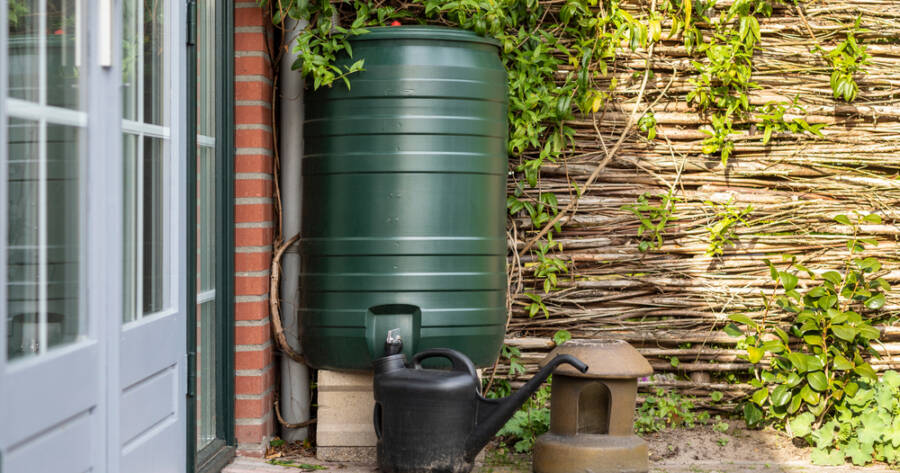As cities across the European Union continue to promote sustainable living, more urban residents are turning to rainwater harvesting as a smart way to reduce water use. From balcony planters to rooftop vegetable beds, gardens in urban areas can thrive with collected rainwater — and the right system makes it easy. Whether you’re growing herbs in a courtyard or managing a shared green space, harvesting rainwater supports water conservation, lowers bills, and helps gardens stay healthy through dry spells.
Why Rainwater Harvesting Works for Cities
Urban areas may seem like unlikely places for water collection, but they actually provide excellent conditions for harvesting rain. Rooftops, terraces, and even small sheds offer large catchment surfaces, and paved areas help funnel runoff quickly. With limited soil space and higher temperatures, urban gardens often need more frequent watering — which makes using collected rainwater not only efficient, but environmentally responsible.
Rainwater is also softer and more plant-friendly than tap water, as it typically contains fewer minerals and no added chlorine. This is especially beneficial for potted plants and delicate seedlings that can be sensitive to chemical-treated municipal water. When paired with compost or organic fertilizer, rainwater helps maintain a healthy, self-supporting garden ecosystem right in the heart of the city.
Compact Barrel Systems for Small Spaces
For balcony gardeners or those with limited outdoor space, compact rain barrels are a great option. These small tanks are easy to install beneath downspouts and can be tucked into corners without taking up valuable ground. Many modern versions are made with recycled plastic or wood-effect finishes that blend into decorative garden layouts.
Some compact barrels include integrated taps, making it easy to fill a watering can directly. Others feature pump attachments or gravity-fed drip irrigation systems to water multiple plants without manual effort. These low-maintenance systems are perfect for beginner gardeners or residents in apartments with shared courtyards.
In places with strict aesthetic codes or conservation rules — like historic city centers — visually discreet options are also available, helping gardeners comply with building regulations while still practicing water reuse.
Modular and Stackable Systems for Growing Gardens
For medium-sized urban gardens or allotments, modular rainwater systems provide greater flexibility. These setups often include interlocking tanks or stackable units that can be added over time as your water needs grow. They are ideal for gardeners who want to scale up from a single barrel without replacing their entire setup.
Modular systems are also a smart choice for community gardens or housing blocks with shared green spaces. Units can be installed in parallel, collecting rain from multiple sources and distributing water more evenly across beds or plots. Some models include built-in filters that remove debris and leaves before storage, reducing maintenance.
Many modular systems are designed to support both hand-watering and automated irrigation, making them especially practical for busy gardeners or for those managing gardens remotely.
Advanced Systems with Filtration and Smart Features
As urban gardening becomes more tech-savvy, advanced rainwater systems are stepping in to meet demand. These systems often include filtration units, overflow management, and digital monitoring to help users track their water levels and usage. Some can be connected to smart irrigation controllers, adjusting watering schedules based on rainfall forecasts or soil moisture levels.
In larger urban homes or commercial garden spaces, advanced systems can also be integrated with underground storage tanks. These are ideal for collecting larger volumes of water without using visible surface space — a helpful option for dense urban plots where space is at a premium.
While these setups may require more planning and installation, they offer high efficiency and long-term sustainability benefits. For those committed to maintaining a productive garden year-round, especially during drier months, these systems provide reliability and convenience.
Maintenance and EU Considerations
Whichever system you choose, proper maintenance is key. Filters should be cleaned regularly, barrels emptied during freezing weather to avoid cracking, and standing water checked to prevent mosquito breeding. Many European cities provide guidance on safe harvesting, including best practices for non-potable water storage.
It’s also important to check local regulations. While rainwater harvesting is encouraged in most EU countries, some regions may have restrictions based on drainage, property lines, or water safety laws. Fortunately, many municipalities now offer incentives for installing eco-friendly systems, especially those that reduce strain on public stormwater infrastructure.
By staying informed and following regional guidelines, urban gardeners can make the most of natural rainfall while supporting local environmental goals.
Greener Gardens, Smarter Water Use
Rainwater harvesting is more than just a gardening tip — it’s a practical step toward climate-conscious urban living. Whether you opt for a compact barrel, a scalable modular system, or a high-tech setup with filtration and smart features, each drop of rain you collect reduces demand on treated water and helps your garden thrive naturally.
As cities across the EU push for sustainability in daily life, these systems empower individuals and communities to contribute directly — one garden, one rainstorm, and one container at a time. With the right tools, even the smallest urban space can bloom responsibly.

